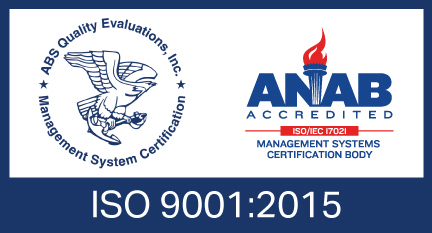Accessibility is the most obvious reason your videos should include voice-over. An estimated six billion people worldwide are non-native English speakers, including 67.3 million people in the U.S. who speak a language other than English at home. Voice-over can help your video content overcome cultural and language barriers to reach a broader audience. However, accessibility is not the only reason for adding voice-over to your localized videos.
What Is Voice-Over?
Voice-over is an audiovisual translation technique whereby a narrative script is translated and recorded by voice actors. There are a few different styles of voice-over, including:
- UN-style Voice-over
This voice-over technique is perfect for translating interviews with a recognizable or public figure (e.g., newscast, documentary, etc.). It does not replace the speaker’s voice completely but instead records on top of it. First, you will hear the original speaker’s voice before it lowers in volume, usually delayed by a second or two, when the target translation voice will begin. This technique enables the listener to still hear the original speaker’s voice, while predominantly hearing the voice-over.
- Narration
There are two types of voice-overs that can be used depending on whether the talent is on-screen or off-screen. If talent is off-screen, then a simple target language replacement can be made. If the talent is on-screen, either an UN-style voice-over can be used or a dub.
- Dubbing
Dubbing entirely replaces the audio track of the original video footage with a new recording by voice actors. The translated narration is lip-synced with the on-screen actors, making word choice critical.

5 Reasons You Should Include Voice-Over in Your Localized Videos
- Some Audiences Prefer Voice-Over to Subtitles
Both voice-over and subtitles make videos accessible. However, some people prefer voice-over to subtitles. Without the distracting text on their screen, it is not only easier to follow the narrative, but they can also look away without potentially missing any information. In addition, the use of different voices enables viewers to distinguish the speakers and understand dialogues more comfortably when there is more than one speaker or character. For those that cannot read, voice-over translation also offers language accessibility in a way that subtitles can not. - Voice-over Translation Increases Conversions
Many videos have a commercial purpose. If you use videos to sell products, services, training, or even ideas, adding language support to your video content can help drive conversions. According to Harvard Business Review, more than 72% of consumers spend most or all of their time on websites written in their native languages and are more likely to buy a product that contains explanatory information in their native languages as well. The same study found that around 56% of people rated obtaining information in their native language as more important to them than price. If you want to increase customer conversion among non-native English speakers, therefore, improving the accessibility of your videos with voice-over is a simple and logical place to start. - Voice-Over Makes eLearning Easier
Videos that offer voice-overs offer a quality learning experience for non-native English-speaking students. Put yourself in your students’ shoes. Imagine watching a training video in one language while trying to read subtitles or a transcript in another while at the same time taking notes. That is only going to cause information overload. Providing an eLearning curriculum with voice-over can enrich your students’ learning experience by making the learning tools more user-friendly for speakers of the target languages. - Voice-Over Translation Improves the Customer Service Experience
Video as a medium is growing fast, with online videos expected to make up more than 82% of consumer internet traffic by 2022. Whether it’s tutorials, interviews, reviews, testimonials, recorded events, or how-to guides, consumers enjoy accessing information via videos. If you are already using videos to support and communicate with your customers, enhancing them with translated voice-overs will help you reach a broader audience. It is quick and easy to improve multilingual customer-focused content when you team up with a professional voice-over translation provider. - Including Voice-Over Offers the Best Viewer Experience
You spend time and money creating professional videos in English for your customers. Understandably, you want the same high production values for your non-English speakers. Fortunately, this does not mean starting from scratch. With a professional studio, top-notch voice talent, and sound engineering expertise, it is possible to produce a seamless and natural audio file that sounds like an original piece of work. By aligning the translation and the voice actor with the tone of the original content, you can create an experience that is worlds apart from subtitling or transcripts. It is almost as if the video was not created first in English at all!

What Types of Videos Benefit from Voice-Over?
All types of videos can benefit from voice-over, including:
- eLearning and training videos
- Marketing and public relations videos
- Interviews
- Documentaries
- News broadcasts
- Video games
- Fitness videos
- Internal communications videos
- Podcasts and vlogs
- Recorded webinars, conferences, or online events
- Recorded events with commentary
- Tutorials or how-to videos
- Social media videos
- TV/radio spots (paid or unpaid)
- Video demonstrations
- Trailers
- Website videos
- Animated videos
We specialize in providing voice-over and audiovisual services to our customers as part of our broad portfolio of translation and interpretation services. Drawing on our decades of experience, we excel at helping our customers to grow their brands and service their customers no matter what their language needs are. Contact us today to discuss how we can help you take your content and customer support to the next level.








